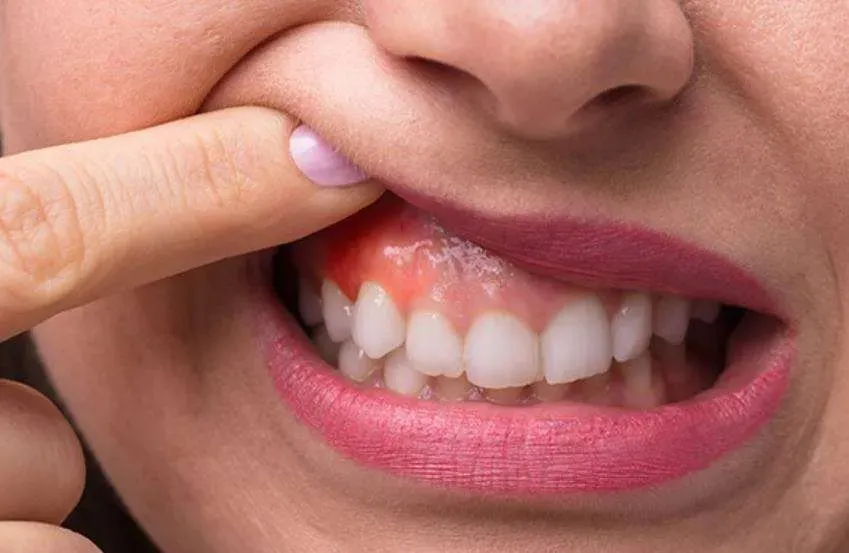Seriously when it happens and through this article, we will take a comprehensive look at gum cancer, from symptoms and risk factors, to options for treatment and prevention, so let’s delve deeper into understanding this disease and find out how we can deal with it effectively.
What is gum cancer
Gum cancer is a type of cancer that occurs when gum cells turn into cancer cells and begin to grow abnormally and uncontrollably, forming a malignant tumor in the gums, as gum cancer is a rare type of cancer, but it can be serious when it occurs, as gum cancer is characterized by its slow development and no obvious symptoms in the early stages, which makes it often diagnosed in advanced stages.
What are the causes of gum in cancer?
Smoking and tobacco use: Smoking and tobacco use are among the most important factors associated with an increased risk of gum cancer, as tobacco contains toxic chemicals that can cause cell changes and increase the likelihood of cancerous tumors developing.
Poor oral hygiene: Lack of attention to oral and dental hygiene can lead to the accumulation of tartar and bacteria in the gums, which increases the risk of chronic gingivitis and can increase the possibility of developing gum cancer.
Genetic factors: There may be genetic factors that make some people more at risk of developing cancer than others.
Unhealthy nutrition: Poor nutrition and lack of some essential nutrients may play a role in increasing the risk of cancer.
Chronic gingivitis: Chronic gingivitis is one of the factors associated with an increased risk of gum cancer, as persistent gingivitis can lead to cell changes and increase the possibility of developing cancerous tumors.

Symptoms of cancer gum cancer
Symptoms of gum cancer may be subtle in the early stages and become more apparent as the disease progresses and among the symptoms that may appear are::
- Swollen gums: Swelling may appear in the gums or in the surrounding mouth area, as this swelling can be palpable or intangible and be located in one place or over a wide area of the gums.
- Gum ulcers: An ulcer may appear in the gums or surrounding tissue and the ulcer may be painful or painless and can bleed easily.
- Color changes: A person may notice a change in the color of the gums, as the gums may become dark red or brown instead of their normal pink color.
- Changes in texture: A person may notice changes in the texture of the gums, such as excessive hardness or excessive softness.
- Bleeding gums: Bleeding gums may occur suddenly or frequently without a clear cause, and this can be an early symptom of gum cancer.
- Pain: A person with gum cancer may feel pain in the affected area, and this pain may be continuous or worsen over time.
- Changes in the teeth: A person may notice changes in the position of the teeth or in the way the mouth closes, and this may be due to the spread of the cancerous tumor.
Read also: How to get a Hollywood smile
Methods of treating gum cancer
Gum cancer treatment depends on several factors such as the stage of the disease, the location of the tumor, and the patient’s general health condition. Gum cancer treatment may include a combination of medical, surgical, radiological and chemical procedures, and in some cases multiple directions are used. Here are some common steps in treatment:
- Surgery: Surgery may be performed to remove the cancerous tumor and surrounding affected tissue. In some cases, some of the affected jaw bone may also be removed if the tumor extends to it.
- Radiation therapy: Radiation therapy may be used to destroy remaining cancer cells after surgery, or in cases where surgery cannot be performed due to the size or location of the tumor.
- Chemotherapy: Chemotherapy can be used to treat gum cancer as part of a treatment plan, either as a standalone treatment or in conjunction with surgery or radiation therapy.
- Targeted Therapy: Targeted therapy techniques directly target cancer cells and attempt to destroy them without affecting nearby healthy cells.
- Supportive care: This includes comprehensive medical care that helps deal with side effects of treatment such as nausea, loss of appetite, and fatigue, and also includes psychological and social support for the patient and his family.
Read also: The latest methods of dental implants in Turkey
Ways to prevent gum cancer
Maintaining oral hygiene: Teeth should be cleaned regularly with brush and toothpaste, and use dental floss or medical floss to remove stains and plaque accumulated between the teeth and on the gums.
Staying away from tobacco: Smoking and tobacco use are considered one of the most important risk factors for gum cancer, so you must abstain from smoking and avoid using tobacco products completely.
Healthy nutrition: You should eat a balanced diet that contains fruits, vegetables, and healthy proteins, and avoid unhealthy foods that may increase the risk of cancer.
Early detection: It is important to make regular visits to the dentist to conduct periodic examinations and evaluations, as early detection can help identify any changes in the gums and take the necessary measures early.
Reducing gingivitis: Gum health must be maintained by cleaning them regularly and getting rid of tartar and bacteria accumulations that may cause gingivitis, as antibacterial mouthwash can be used as part of your oral care routine.
Reducing stress and tension factors: Maintaining a healthy lifestyle and eliminating stress and tension factors may help reduce the risk of gum disease and gum cancer.
Related articles :
Hollywood smile in Istanbul
advantages of cosmetic dentistry in Turkey
Plastic surgery in Istanbul
Dental treatment cost in Turkey
advantages of laser teeth whitening in Istanbul
Types and risks of dental implants in Turkey
hair transplant techniques in Istanbul
Dental veneers in Turkey
Hair transplantation in Turkey
Types of orthodontics in Istanbul and their features
